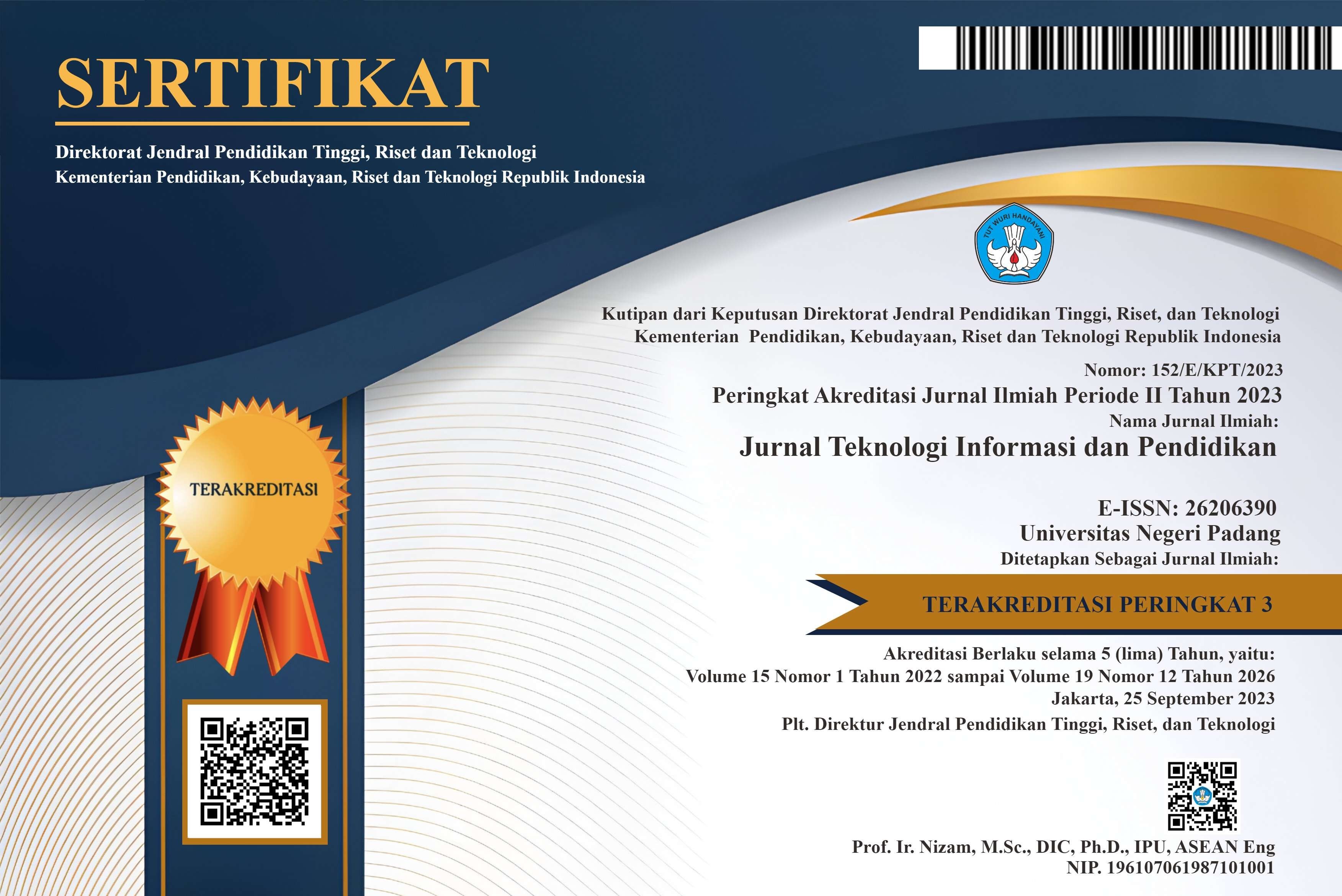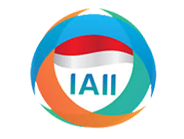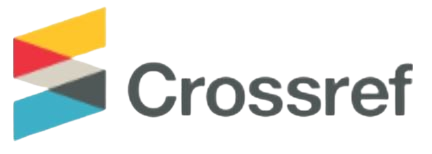Designing and Developing of Learning Class Grouping Applications Base on Genetic Algorithms
Abstract
The student learning class grouping application is a crucial service within the academic lecture system to facilitate learning and make it easier for educators to choose strategies and teaching methods to optimize academic achievement. In this grouping application, a genetic algorithm is implemented to optimize the distribution of learning classes, adopting the concept of biological evolution where the initial population of learning groups is considered as "individuals" with information about different grouping criteria. Through the process of selection, crossover, and mutation, these individuals undergo evolution from generation to generation, where those with the highest fitness value (according to the specified criteria) are passed on to the next generation, while those with lower fitness values may be eliminated. This evolutionary process continues until an optimal learning group is obtained, with a combination of suitable and best criteria to achieve the desired intra-heterogeneous and interhomogeneous characteristics in learning.
References
K. B. Lee and R. Salman, “The Design and Development of Mobile Collaborative Learning Application Using Android,” J. Inf. Technol. Appl. Educ. JITAE, vol. 1, no. 1, pp. 1–8, 2012, [Online]. Available: www.jitae.org.
Y. Steinert and L. S. Snell, “Interactive lecturing : strategies for increasing participation in large group presentations,” vol. 21, no. 1, pp. 37–42, 1999.
M. Learning, “The 2 Sigma Problem : The Search for Methods of Group Instruction as Effective as One-to-One Tutoring,” 1984.
G. Griban et al., “Formation of Health and Fitness Competencies of Students in the Process of Physical Education,” vol. 18, pp. 73–78, 2020, doi: 10.26773/smj.201008.
G. D. Kuh, “What We’re Learning About Student Engagement From NSSE: Benchmarks for Effective Educational Practices,” Chang. Mag. High. Learn., vol. 35, no. 2, pp. 24–32, 2003, doi: 10.1080/00091380309604090.
S. E. Volet and G. Ang, “Culturally Mixed Groups on International Campuses : an Opportunity for Inter-cultural Learning,” vol. 17, no. 1, pp. 5–23, 1998.
B. Černilec, “Differences in students ’ mathematics knowledge in homogeneous and heterogeneous groups,” vol. 11, no. 1, pp. 15–32, 2023.
D. Suprihatin, “The Influence of Indonesian Instructional Books with a Scientific Approach on Students ’ Learning Outcomes in Scientific Writing,” vol. 16, no. 2, pp. 557–580, 2023.
M. Cotič, D. Doz, M. V. Zuljan, and A. Žakelj, “Teachers ’ appraisal of various aspects of the efficiency of homogeneous and heterogeneous learning groups,” vol. 18, no. 1, pp. 1–14, 2023.
Z. Dörnyei and C. Muir, Creating a Motivation Classroom Environment. Cham: Springer International Publishing, 2019.
A. Volodina and G. Nagy, “Vocational choices in adolescence: The role of gender, school achievement, self-concepts, and vocational interests,” J. Vocat. Behav., vol. 95–96, pp. 58–73, Aug. 2016, doi: 10.1016/J.JVB.2016.07.005.
R. Chugh and U. Ruhi, “Social media in higher education : A literature review of Facebook,” 2017, doi: 10.1007/s10639-017-9621-2.
A. H. Anaelka, “Education 4.0 Made Simple: Ideas For Teaching,” Int. J. Educ. Lit. Stud., vol. 6, no. 3, p. 92, 2018, [Online]. Available: https://journals.aiac.org.au/index.php/IJELS/article/view/4616.
Muharmi, Y. (2016). Pengelompokan Siswa Berdasarkan Faktor-faktor Yang Mempengaruhi Keberhasilan Siswa dalam Belajar Menggunakan Metode Clustering K-Means. Jurnal Teknologi Informasi dan Pendidikan, 9(1), 94-101.
Samala, A. D., Fajri, B. R., Ranuharja, F., & Darni, R. (2020). Pembelajaran blended learning bagi generasi Z di era 4.0. Jurnal Teknologi Informasi Dan Pendidikan, 13(1), 45-53.
L. Sophie and L. Jun, “Empowering learners in the second / foreign language classroom : Can self-regulated learning strategies-based writing instruction make a di ff erence ?,” J. Second Lang. Writ., no. February, p. 100701, 2019, doi: 10.1016/j.jslw.2019.100701.
G.-J. Hwang, S.-Y. Wang, and C.-L. Lai, “Effects of a social regulation-based online learning approch on students’learning achievements and behaviors in mathematics,” Comput. Educ., p. 104031, 2020, doi: 10.1016/j.compedu.2020.104031.
C. Liao, C. Chen, and S. Shih, “The interactivity of video and collaboration for learning achievement, intrinsic motivation, cognitive load, and behavior patterns in a digital game-based learning environment,” Comput. Educ., 2019, doi: 10.1016/j.compedu.2019.01.013.
A. Raes, P. Vanneste, M. Pieters, I. Windey, W. Van Den Noortgate, and F. Depaepe, “Learning and instruction in the hybrid virtual classroom: An investigation of students’ engagement and the effect of quizzes,” Comput. Educ., vol. 143, no. August 2019, pp. 1–16, 2020, doi: 10.1016/j.compedu.2019.103682.
A. Gürbüz, “Current Perspectives on Integrated Skills Approach in the EFL / ESL Classroom.”
V. N. Hoi, “Transitioning from school to university: a person-oriented approach to understanding first-year students’ classroom engagement in higher education,” Educ. Rev., pp. 1–21, Jan. 2023, doi: 10.1080/00131911.2022.2159935.
E. Yilmaz-Na and E. Sönmez, “Unfolding the potential of computer-assisted argument mapping practices for promoting self-regulation of learning and problem-solving skills of pre-service teachers and their relationship,” Comput. Educ., vol. 193, p. 104683, Feb. 2023, doi: 10.1016/J.COMPEDU.2022.104683.
G. Almgren Bäck, E. Lindeblad, C. Elmqvist, and I. Svensson, “Dyslexic students’ experiences in using assistive technology to support written language skills: a five-year follow-up,” Disabil. Rehabil. Assist. Technol., pp. 1–11, Jan. 2023, doi: 10.1080/17483107.2022.2161647.
F. Kazemi, N. Asgarkhani, and R. Jankowski, “Machine learning-based seismic fragility and seismic vulnerability assessment of reinforced concrete structures,” Soil Dyn. Earthq. Eng., vol. 166, p. 107761, 2023, doi: https://doi.org/10.1016/j.soildyn.2023.107761.
Y. Wu and F. Zhang, “The Health Cost of Attending Higher-Achievement Schools: Peer Effects on Adolescents’ Academic Performance and Mental Health BT - The Frontier of Education Reform and Development in China: Articles from Educational Research,” D. Guo, Ed. Singapore: Springer Nature Singapore, 2023, pp. 211–240.
S. Özeren and E. Top, “The effects of Augmented Reality applications on the academic achievement and motivation of secondary school students,” vol. 11, no. 1, pp. 25–40, 2023.
A. Schmeisser and C. A. Courtad, “Using Technology to Enhance Learning for Students With Learning Disabilities,” in Using Technology to Enhance Special Education, vol. 37, J. P. Bakken and F. E. Obiakor, Eds. Emerald Publishing Limited, 2023, pp. 15–28.
A. Krouska, C. Troussas, and M. Virvou, “Applying genetic algorithms for student grouping in collaborative learning: A synthetic literature review,” Intell. Decis. Technol., vol. 13, no. 4, pp. 395–406, 2020, doi: 10.3233/idt-190184.
J. Moreno, D. A. Ovalle, and R. M. Vicari, “A genetic algorithm approach for group formation in collaborative learning considering multiple student characteristics,” Comput. Educ., vol. 58, no. 1, pp. 560–569, 2012, doi: 10.1016/j.compedu.2011.09.011.
A. Sukstrienwong, “A Cyclic-genetic-algorithm Approach to Composing Heterogeneous Groups of Students,” vol. 5, no. 4, pp. 467–474, 2016, doi: 10.18421/TEM54-09.
P. De Lit, E. Falkenauer, and A. Delchambre, “Grouping genetic algorithms: An efficient method to solve the cell formation problem,” Math. Comput. Simul., vol. 51, no. 3–4, pp. 257–271, 2000, doi: 10.1016/s0378-4754(99)00122-6.
D. Kurniadi, R. Safitri, D. Irfan, and K. Budayawan, “Determining Study Groups Based on Student Profile Criteria Using K-Means Method,” no. 501, 2022.
J. A. Smith, M. McPherson, and L. Smith-Lovin, “Social Distance in the United States: Sex, Race, Religion, Age, and Education Homophily among Confidants, 1985 to 2004,” Am. Sociol. Rev., vol. 79, no. 3, pp. 432–456, 2014, doi: 10.1177/0003122414531776.
R. Valls and L. Kyriakides, “The power of Interactive Groups: how diversity of adults volunteering in classroom groups can promote inclusion and success for children of vulnerable minority ethnic populations,” Cambridge J. Educ., vol. 43, no. 1, pp. 17–33, 2013, doi: 10.1080/0305764X.2012.749213.
Copyright (c) 2023 Jurnal Teknologi Informasi dan Pendidikan

This work is licensed under a Creative Commons Attribution-ShareAlike 4.0 International License.















.png)














